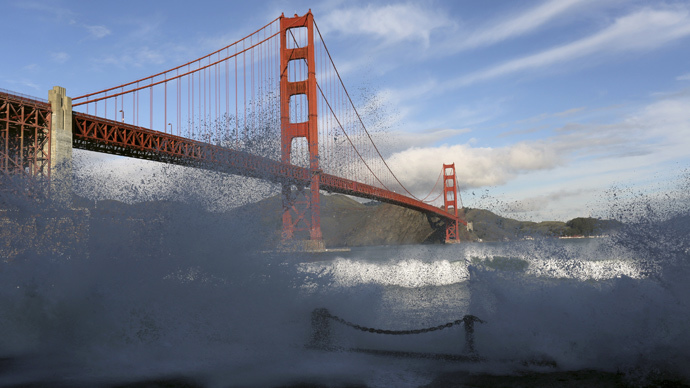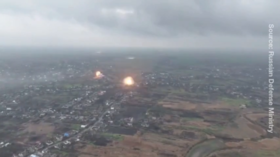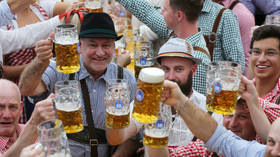California should brace for the 'Big One' – US Geological Survey

The chances of a major earthquake striking California in the next three decades have gone up, and it is more likely to hit San Francisco than Los Angeles, according to a new forecast from the US Geological Survey (USGS).
Results of the third Uniform California Earthquake Rupture Forecast (UCERF3), published Tuesday by the USGS, show a seven percent chance of an 8.0 quake – an increase from the 4.7 percent predicted during the previous survey in 2008. The odds of a 6.7 quake, such as the one that hit Los Angeles in 1994 and San Francisco in 1989, have decreased by about 30 percent.
“The new likelihoods are due to the inclusion of possible multi-fault ruptures, where earthquakes are no longer confined to separate, individual faults, but can occasionally rupture multiple faults simultaneously,” Ned Field, the lead author of the forecast and a USGS scientist, said in a statement.
The UCERF study is the first to use computer models to look at interconnected fault lines throughout the state. While the 2008 forecast could only look at 6,000 possible earthquakes, the new one was able to model 250,000 possibilities. The latest calculations are based on over 300 faults. The original 1988 report was based on only 16.
Data from the study reveals the 7.2 quake that hit along the border with Mexico in April 2010 triggered movement on at least six faults, including the Elsinore and San Jacinto faults that run close to the heavily populated areas surrounding Los Angeles. The data from that quake showed that tremors along a fault could jump over gaps as long as seven miles, and even reverse direction.
The deadly 9.0 quake that struck Japan in 2011 “also violated previously defined fault-segment boundaries,” contributing to the deadly tsunami and nuclear disaster at Fukushima, the study said.
.@USGS says odds of 6.7 mag #earthquake in #California over next 30 years is 99 percent! New quake study @ABC7 11p pic.twitter.com/qP12b12LVZ
— Elex Michaelson (@ABC7Elex) March 11, 2015
According to the USGS, the ‘Big One’ is far more likely to occur in the north of the state than in Los Angeles, as previously believed. Los Angeles has only a 60 percent chance of a 6.7 quake in the next 30 years, compared to a 72 percent chance for the San Francisco area.
Thousands of earthquakes occur in California every year, as the state sits on a network of faults between the North American and Pacific tectonic plates. A 2006 study focusing on the San Andreas fault system found that it was past due for a major earthquake – one with at least a 7.0 magnitude. The study concluded that the southern region of the fault had not seen a massive quake in around 300 years.
READ MORE: North California must brace for major earthquake in near future - US Geological Survey
“We are fortunate that seismic activity in California has been relatively low over the past century,” said Tom Jordan, co-author of the UCERF study and director of the Southern California Earthquake Center. However, tectonic forces are “continually tightening the springs of the San Andreas fault system, making big quakes inevitable,” he added.
Ned Field of the USGS described the San Andreas Fault as “really locked and loaded.” The US Geological Survey’s message to Californians has not changed, though. “You live in earthquake country, and you should live every day like it’s the day a Big One could hit,” Field said in an interview.












